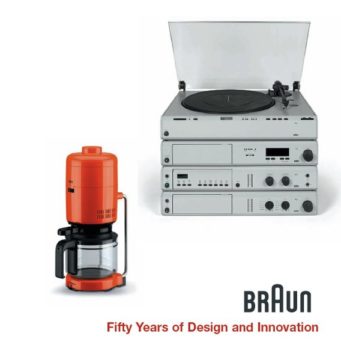Braun products have been shown more frequently
at exhibitions than those of any other comparable
company. Some people find that they reflect
basic human values such as authenticity and integrity.
For others, they are the very incarnation
of German perfectionism. Braun is not merely a
trademark; it stands for an all encompassing concept.
For the last five decades, this concept has
spawned innovative products with an unprecedented
regularity that begs to be explained – especially
as the era spanned by the history of
Braun design is not exactly one characterized by
continuity. Instead, the second half of the 20th
century witnessed a dramatic change in living
conditions. Prosperity and greater ease entered
our daily lives, but also widespread disorientation
and alienation. It is to the credit of those who
set the Braun design project in motion that they
were able to counteract this feeling of alienation –
which manifested itself to them not least in poorly
designed objects of daily use – with a vision of
design reform. There had already been attempts
made along these lines. What was new was that
a commercial enterprise spearheaded the movement.
Also new was the systematic approach, the
application of design principles to modern products
and the innovative dynamic thus triggered.
Finally, the considerable commercial success this
design project enjoyed was likewise a revelation.
All of this led the company to establish a design
department that was not merely an appendage,
but rather an active decision-maker in the development
of products from the initial idea to realization.
This is how Braun and design became synonymous.
Bernd Polster is one of the best-known German
design authors. Nearly all of his books have been
translated into other languages as well. His most
recent publications are German Design for Modern
Living (2008) und bauhaus design (2009). During
his university studies Polster tried to learn dialectical
thinking from philosopher Leo Kofler. He subsequently
traded promising careers as centre forward,
artist and psychologist for books on cultural
history and journalistic reporting.
- Veröffentlicht am Freitag 14. März 2025 von Edition Axel Menges
- ISBN: 9783936681352
- 540 Seiten
- Genre: Design, Hardcover, Innenarchitektur, Kunst, Softcover
